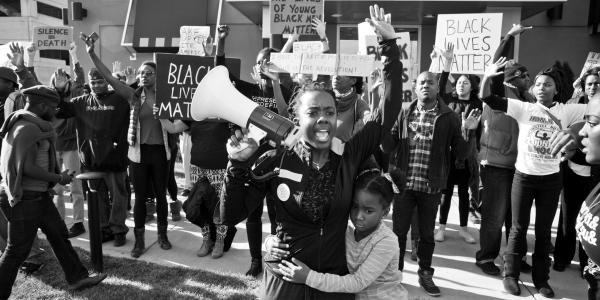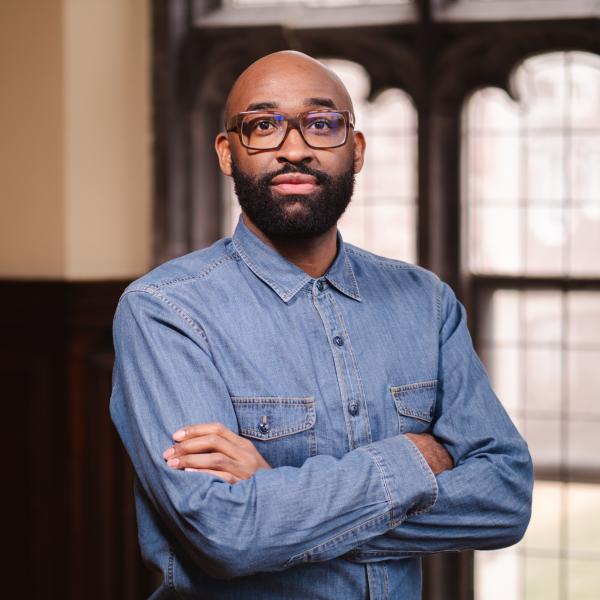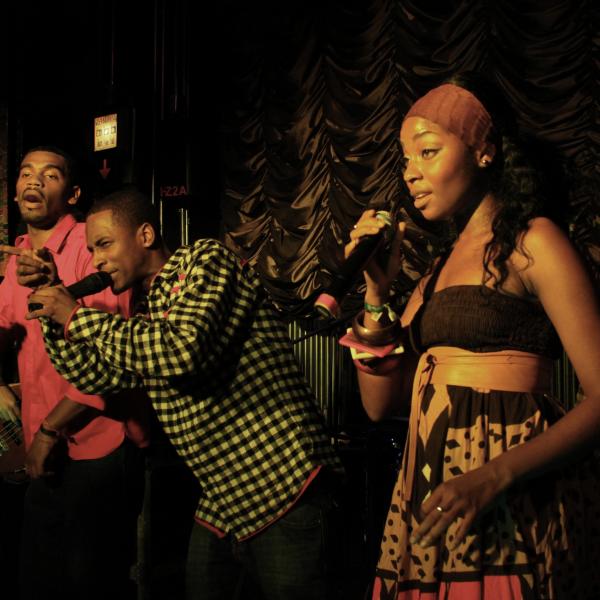Scholar Jasmine Mahmoud connects the spark for the protest movement depicted in the film Whose Streets to a centuries-old history of the dehumanization of black people and highlights the women who have fought back over time.
On one side, a horizontal line of mostly black protestors stand with arms interlocked at elbows as if to make a human chain. Unarmed, many wear t-shirts and jeans. On another side, mostly white police officers, all armed and many with batons, advance. Although police warn the protestors to disperse, they — the interlinked human chain — will not be moved. One protestor, particularly, expresses this. “We will continue to fight for our rights!” Brittany Ferrell shouts from the top of her lungs, voiced strained but still full of power. “We will continue to fight for our rights!”
In this moment, Ferrell’s and the collective power of the protestors was felt. Following this standoff, the police officers retreat and disperse. The scene takes place in front of the Ferguson Police Department days after the August 9, 2014 death of Michael Brown Jr., the unarmed black teenager shot at least six times by white police officer Darren Wilson. Onlookers described Brown’s last moments holding his hands up and yelling “Hands up! Don’t shoot!” After his death, Brown’s body lie on the ground for over four hours; police did not let his mother, Lezley McSpadden, attend to his body. Hours later, vigils and protests erupted in Ferguson in dedication to Brown’s life and in mourning over his death. “With their hands up,” dance scholar Anusha Kedhar has written, “the protesters reclaim[ed] a space for mobility for Michael Brown.”
Beyond this embodied and collective power, another significance of this scene is the central role of women. Born in St. Louis, Brittany Ferrell attended high school in Ferguson, Missouri. The film Whose Streets? centralizes her story and work: as an activist in her early 20s leading the frontline of protests, as a co-founder of Millennial Activist United (with Alexis Templeton and Ashley Yates), as a single mother raising a young daughter, as a student who postponed nursing school, and, as the film gracefully depicts, a black woman who marries a fellow black woman and activist, Alexis Templeton, in December 2014.
The film Whose Streets? chronicles Ferrell’s story alongside other black female activists, including Kayla Reed, who founded St. Louis Action Council. Director Sabaah Folayan, then a pre-med student at Columbia University and who grew up in South Central Los Angeles, connected with co-director Damon Davis, a St. Louis–based artist; together they “talked about how black women are constantly working and being overshadowed.” Their decision implicitly recognizes black women in past movements including Harriet Tubman, Sojourner Truth, Ida B. Wells, Claudette Colvin, Fannie Lou Hamer, Pauli Murray, Maya Angelou and the three black queer women — Patrisse Cullors, Alicia Garza and Opel Tometi — who founded Black Lives Matter. Garza has said, “when black people get free, everybody gets free.”
In the early 1830s, T.D. Rice, a white actor from New York City, “created” blackface minstrel shows based on caricatures of black people. In the 19th century, blackface performance — and iterations including the variety show — grew to become the most popular form of entertainment in the United States. These racist depictions on the stage extended into quotidian and juridical spheres. In 1857, Supreme Court Justice Taney wrote the deciding opinion in Dred Scott v. Sandford that black people — whether enslaved or free — were “of an inferior order” and “had no rights which the white man was bound to respect.” Dehumanization of black people still has currency. Whose Streets? (which briefly cites Taney’s decision) contrasts national media coverage that focused on the few looters with documentation of what more fully happened on the ground: masses of mourners — including Michael Brown’s parents — at vigils; the day-to-day lives of activists, including David Whitt, a father and videographer for Copwatch who exclaims, “the camera, that’s my weapon”; and organized protestors marching and shouting “get your hands up.” Protestors and their choreography “through the ultimate and most recognizable gesture of cooperation,” Kedhar has also written, “perform non-cooperation with an unjust and racist state.”
The dehumanization of black people has particular presence in Ferguson. In 2010, the city had a population of 21,203: 29.3 percent white and 67.4 percent black. Although a majority black community, city officials were, at the time of Brown’s death, mostly white. Revenue raising schemes in Ferguson demonstrated this racial difference. In 2015, the U.S. Justice Department found that Ferguson’s police department routinely “extract[ed] money from poor blacks … as revenue to sustain the city’s budget.” White officials routinely fined black residents for benign actions such sitting in a car as well as “‘peace disturbance,’ ‘failure to comply’ and ‘manner of walking’ … [where] more than nine out of 10 of those cited were black.” When the film features a national interview with Darren Wilson where he says “you can’t perform the duties of a police officer and have racism in you,” this statement rings untrue against mounting evidence of racially motivated extraction from his department.
“I never had a record until I moved into Ferguson. Now my record is longer than my leg,” one resident says midway through the film. Another: “I have four sets of tickets that total $2000.” Several scenes feature then President Barack Obama and then Missouri Governor Jay Nixon, who both stress the need for law and order in protests. Yet their calls contrast to how the film documents the role of police as revenue extractors, and as agitators, eerily with snipers aimed at unarmed protesters and — as Dhoruba Shakur, protestor-turned-archivist reveals in his collection of found shells, rubber bullets and smoke canisters — devices of chemical warfare used against protesters, “warfare,” that Skakur says, “you are not supposed to be able to use on U.S. soil.”
Damon Davis is a St. Louis–based artist who, days before the non-indictment of Darren Wilson, made “All Hands on Deck,” posters featuring images of hands of various ages and races pasted onto boarded-up businesses with the owner’s permission. As a documentary film, Whose Streets? is also art, work that organizes the senses, and does so to humanize black people. Another protagonist is Tef Poe, St. Louis–born hip-hop artist and co-founder of Hands Up United. Poe’s voice becomes the film’s id. While speaking at the Chaifetz Arena during Ferguson October, four days of protests that drew international attendees, Poe says: “We’ve been out here for 65 days. … I don’t need Don Lemon to confirm what happened because I’m there. I’m there. … When the tanks and the armored trucks was there, and the tear gas was there, and we was getting hit with the rubber bullets and we said you know what? I can’t stay home for this. I can’t stay home for this.”
In documenting the lives of those who did not stay home amid injustice, Whose Streets? shows up for Lezley McSpadden and Michael Brown Sr., parents who lost a son. The film shows up for those routinely harassed and unlawfully fined for walking, sitting or driving while black. The film shows up for black women, black people and, ultimately, black protestors who use their bodies to continue to fight to be treated with dignity, humanity and equity.



